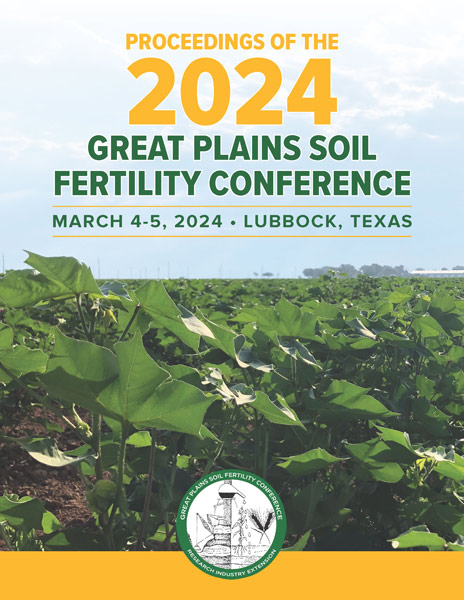Conference Proceedings Available!
Proceedings
Authors
| Filter results5 paper(s) found. |
|---|
1. In-furrow Placement of Dry Urea Prodcuts with Winter WheatPrevious research has shown that the application of some nitrogen fertilizer prior to or at the time of wheat seeding can positively affect the initiation of fall tillers and thus yield potential. However, there are logistical challenges in placing that nitrogen in no-till production systems. Traditionally, the placement of urea-based fertilizers in-furrow with wheat seed has not been recommended. The objectives of this project were to evaluate stand reduction and associated... L. Haag, A. Schlegel, D. Ruiz diaz |
2. Increasing Winter Wheat Grain Yield By Replicating the Management Adopted in High-Yielding Commercial FieldsLarge winter wheat (Triticum aestivum) yield gaps between farmer yields and yield potential in the southern Great Plains indicate the need to improve recommendations of best management strategies to profitably bridge this gap. Many studies have been completed on individual management factors pre-determined by the individual researcher, but we are not aware of studies comparing combination of practices that producers are currently using, which would be more relevant for real-world scenarios.... L.P. Ryan, R.P. Lollato, L. Haag, J. Holman |
3. Measuring N2O Emissions from Dryland Sorghum Production Using Gas Chamber and Eddy Covariance Flux MethodsNitrous oxide (N2O) emissions are not well quantified in the dryland production systems of the Great Plains. Lack of field-based data has led to the use of questionable assumptions in various life-cycle analyses when dryland grain production is a feedstock. A field-scale trial of 81 acres was established within a 160 acre production field of dryland grain sorghum in northwest Kansas in 2021. Grain sorghum was no-till seeded into wheat stubble. Grower practices for nitrogen... L. Haag, P. Tomlinson, S. Patel, E. Santos |
4. Spatial Variability in Profile Soil Nitrate, Nutrient Update, Grain Yield, and Nutrient Removal in a Commercial Dryland Grain Sorghum FieldEstablished relationships exist that describe the confidence interval around a soil test value as a function of cores in the sample for nutrients such as phosphorus. This information is useful for developing economically and agronomically optimal soil sampling strategies. Residual soil nitrate can be a significant source of a crops N needs in dryland cropping systems where N loss is minimal. A common question among producers and consultants is how many profile N cores are required... L. Haag, S. Patel, P. Tomlinson, E. Santos |
5. Summer Annual Legumes: Yield Potential and Water UseDue to the decline of the Ogalla Aquifer and reduced irrigation capacity, there is a growing interest in more water-efficient cropping systems in the semi-arid central Great Plains. One of the most water-intense crops grown on the semi-arid central Great Plains is alfalfa (Medicago sativa L.). Alfalfa is grown for its nutritive value and protein, which is highly desired by cow/calf, feed yards, and dairies of the central and southern Great Plains. The purpose of this study was to evaluate... J. Holman, N. Detter, A. Obour, L. Haag, K. Roozeboom |
